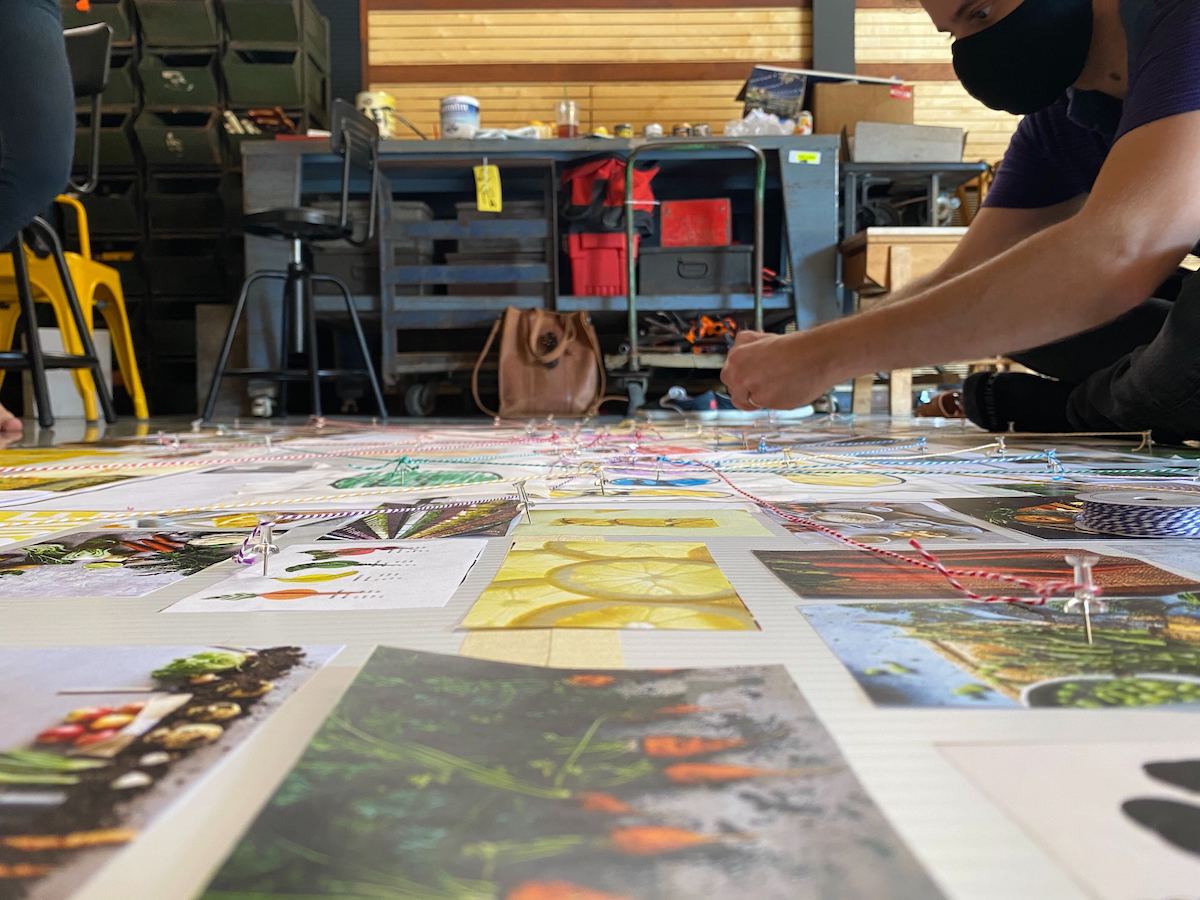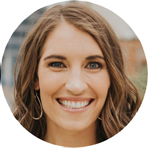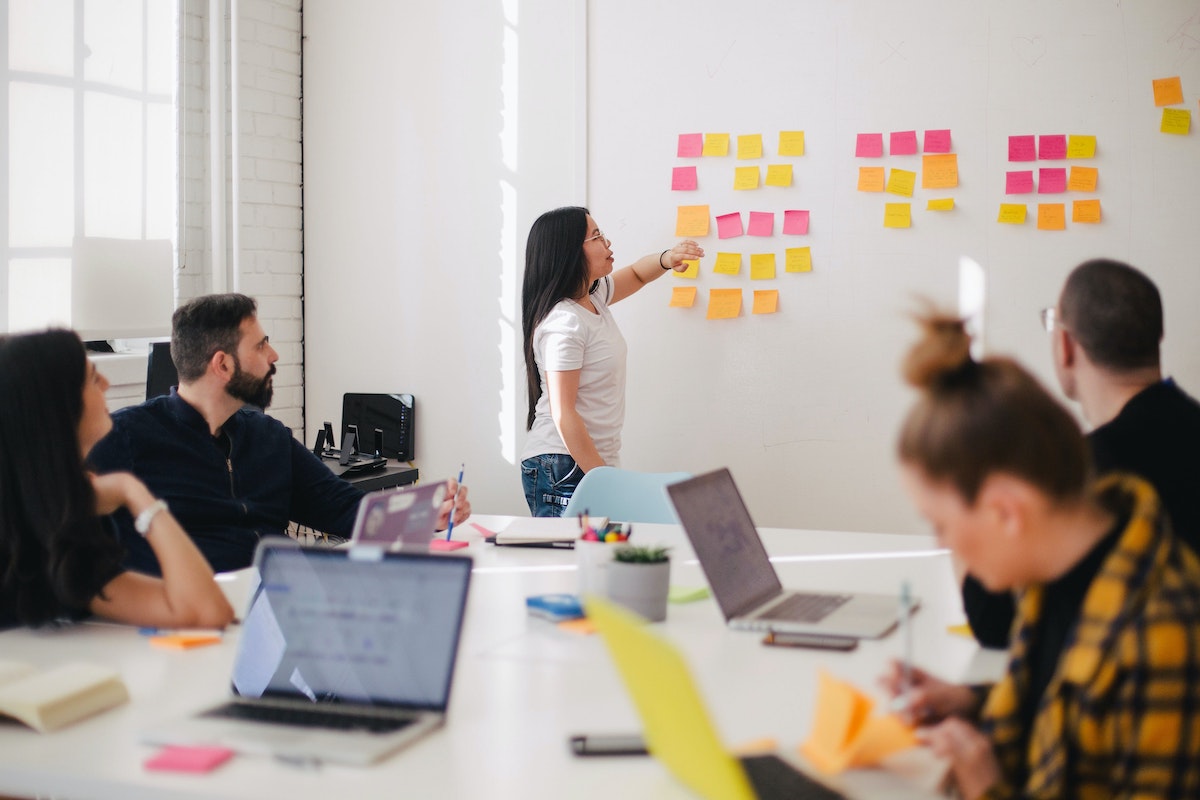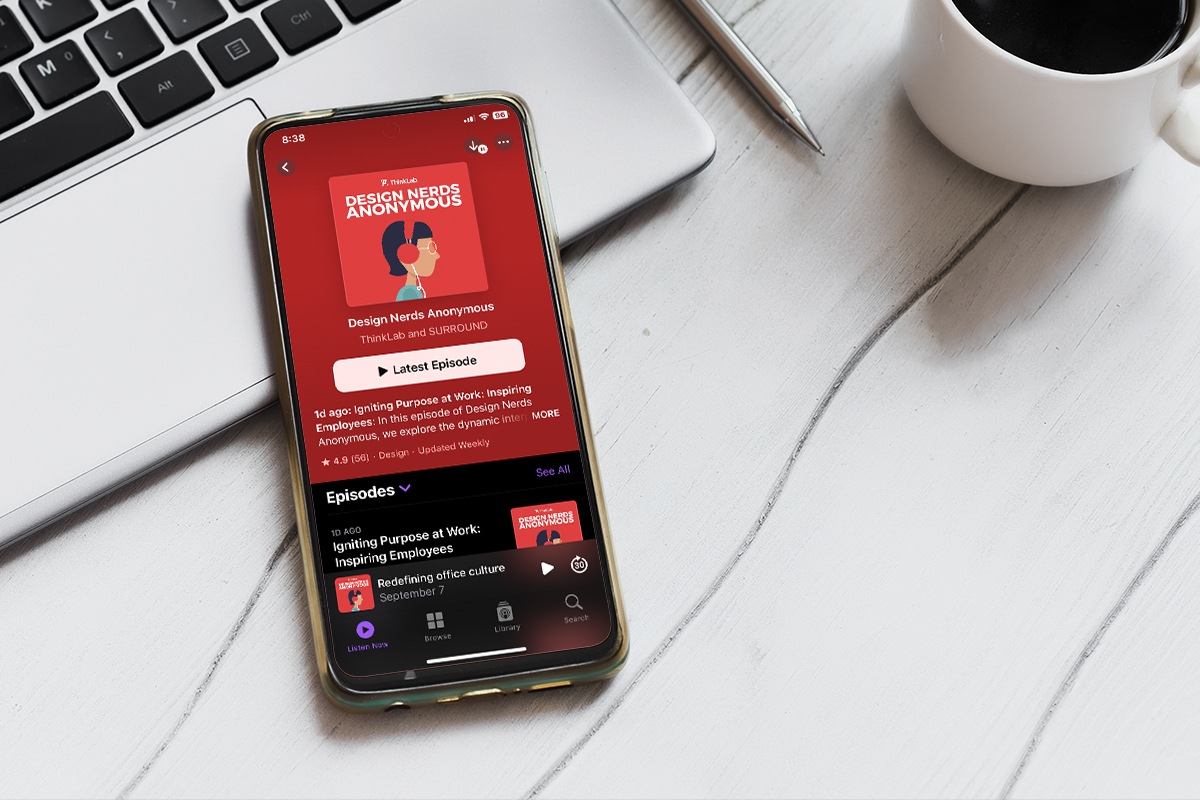
How One A&D Firm Made the Most of the “Lost Year”
For one Chicago firm, a special project provided connection and inspiration in a disjointed year. But it also shaped its people’s values and aligned their purpose to serve the community through design.
A moderator at a recent ThinkLab roundtable posed this question: “What did you do during the lost year?”
It was a rhetorical question, one meant to challenge everyone — and every company in our industry — to think about what we did to improve, grow, and challenge ourselves and our business practices and processes in a year that, at times, may have provided more time for self-investment than we were even comfortable with.
Eastlake Studio in Chicago is one firm where people really dove in during the lost year, and the outcome was much more than they had expected or planned for. Project Phoenix was started as a design charrette within the studio to keep teams engaged during a lull in project work — and also to foster some broader thinking about what design would need to accomplish in order to truly support companies and people in a post-vaccine world.
Four teams were divided and given four hypothetical clients, four very real spaces within Chicago, four core principles, and one guiding vision: to create design concepts that reflect lessons learned during the pandemic from both a sociological and psychological perspective.
The kicker: the unintended beneficiary was Eastlake Studio. Put simply, instead of changing its clients, it changed how the firm itself thinks. Here’s how:
Recalibrating their values
While each of the design teams followed the same guiding vision for the project, they each had very different clients — and a successful design hinges now more than ever before on aligning that design and space with the values of the client organization.
As Eastlake Studio principal Christina Brown explains, “When we first started working on the projects, I wondered if a company could change its values, to re-evaluate and evolve those values to what is important now. At Eastlake, firm values have evolved but been fairly consistent over the past 33 years, but in launching Project Phoenix, it has challenged us to reflect and recalibrate our values as well.”
Peter Randolph, an architect at the firm and one of the project leads, adds, “Looking deeply through the lens of company culture and values to inform the design of our hypothetical client spaces for this project forced us to look at ourselves through that same critical lens.”
In the past, Eastlake Studio aligned around doing great design, being a great place to work, making money, having fun, and getting recognized for great design — all of which are admirable company values that have indeed helped the firm to thrive.
But as Brown notes, “after an incredibly challenging year, we realized that our values really center around our people. It’s not just about getting recognized, but making an impact on individual lives that we design for. It’s not just about being a great place to work, it’s about providing a company culture that celebrates people and promotes ‘realness’ — and in turn, that environment of authenticity creates better design!”
As far as the fun goes, Brown noted that it’s been a tough year to have a whole lot of fun, but that is squarely in focus for this next year.
Finding time to get it wrong — then right again
Curiosity often drives the creative mind, but how do we let ourselves get truly curious in how we solve human challenges through spatial design? You add more time. To take a step forward means finding the time to get it wrong and try again.
“The real opportunity was the chance to iterate on this project, something that we just haven’t been afforded the time to do on many projects,” says Randolph. “Our teams were divided, but reviews were completely collaborative and seeing other architects’ and designers’ thought process helped us all to expand our own thinking.”
But when launched back into the reality of general contractor timelines, how can the teams maintain that iterative process? Brown suggests that they are already incorporating this process behind the scenes: “We may not be able to demand more time for iteration from our clients, but we are doing it intentionally and internally at the forefront of the project, and it is a benefit to our teams and our clients.”
And iteration isn’t limited to the drawing board. Throughout the past year, curiosity about how things can be done virtually, experimenting with various technologies and platforms to provide the best user experience, and evolving its own hybrid working model has helped Eastlake to prepare as a firm for its next chapter as well.
Aligning around core values
Creating design concepts reflecting the pandemic, from both a sociological and psychological perspective, is a tall order. In reviewing the outcomes of this challenge, four key values were evident in each team’s design: flexibility, wellness, equity, and innovation.
- Flexibility: Brown set a challenge to the manufacturers in the industry: “Flexibility, of all the values, has so many implications for products. It isn’t just creating products that can be reused and reconfigured from one renovation to the next; flexibility in this next chapter has to provide hour-to-hour, minute-to-minute reconfigurability, and we need that across all product times, and at various price points as well. Flexibility can’t be a feature only afforded to those who have money for it.”
- Wellness: As a design concept, wellness is essential to creating the desire for people to reengage in public spaces. “It goes beyond having a room with a sofa and some quiet space. We need to consider wellness on an individual level, and much of that come down to providing choice,” says Brown. Randolph agrees: “How could we provide choice in airflow, lighting, and other major building systems that have historically just been seen as functional, not an element of individual wellness?” Considering individual choice within large systems poses a significant challenge, but one that he and his fellow architects at the firm are embracing.
- Equity: “Equity in space design has the power to break down barriers of classism within organizations. It makes leaders more accessible, mentorship more fluid, and has significant impacts on employees’ view of their value within an organization,” notes Brown. Project Phoenix included a law firm client, and the design team decided to challenge the hierarchical nature of spatial design that has long stood as the norm in this business sector — it utilized all exterior space as common collaborative space, working in from the perimeter and placing the firm leaders in the core of the floorplan. “It seemed like a pipe dream for this type of client honestly,” says Randolph. “To our surprise, we pitched the project concept to a firm last week, and they loved it!”
- Innovation:This was the hardest of the four key values for the teams to capture, in large part because innovation looks different for every client and every space. It’s a mindset more than a resulting design. And this mindset is exactly what Brown hopes to continue: “We hope this project is the start of a conversation and a way to spur dialogue with our clients and community. We have a seat at the table and the chance to really help companies understand more than just their space, but what they stand for, how they treat their people, and how their space can reflect that.”
Brown also leaves us with a challenge: “Now is the time for us all to reflect on our own businesses, evaluate our purpose, recalibrate where needed, and to honor and value the individuals as they are the foundation of any organization.”
Are you on Clubhouse? We’d love to hear from you on Fridays at 9:00 am EST in our club: Design + Data w/ThinkLab.
Erica Waayenberg is the head of Research & Content Development for ThinkLab, the research division of SANDOW. At ThinkLab, we combine SANDOW Media’s incredible reach to the architecture and design community through brands like Interior Design Media, Metropolis, Luxe, and Material Bank with proven market research techniques to uncover relevant trends and opportunities for the design industry. Join in to explore what’s next at thinklab.design/join-in.



